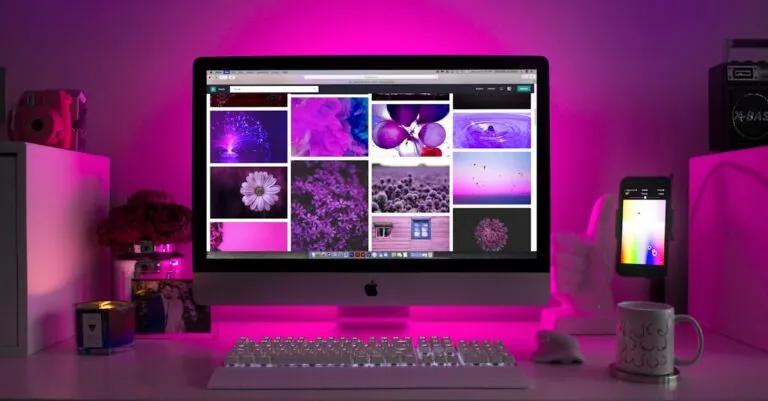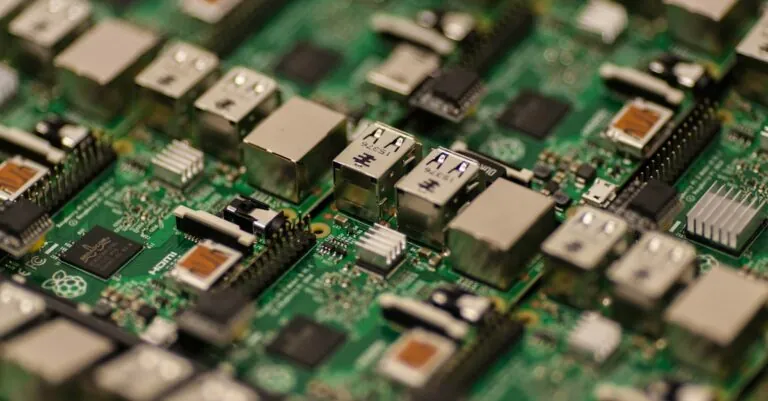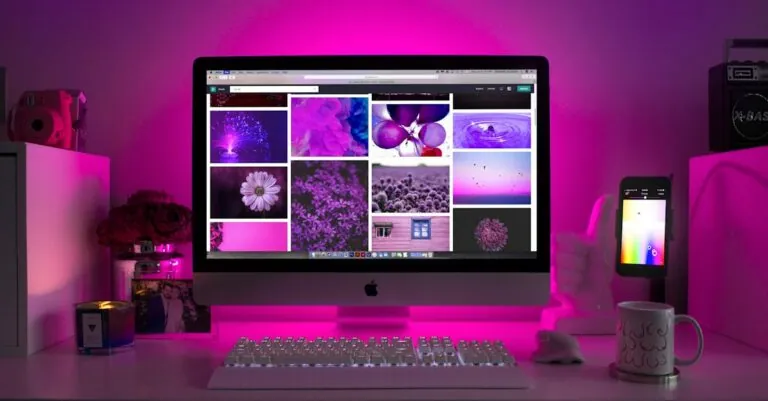In a world where even your toaster can have a personality, the Internet of Things (IoT) is revolutionizing everyday life. Imagine waking up to a coffee maker that knows your caffeine cravings better than your barista. From smart fridges that remind you when you’re running low on milk to wearables that track your every move, IoT devices are transforming mundane routines into seamless experiences.
Table of Contents
ToggleOverview of Internet of Things Devices
Internet of Things (IoT) devices integrate seamlessly into daily life, enhancing convenience and efficiency. Smart home devices, including thermostats, lights, and security systems, allow users to control elements of their environment remotely. Smart thermostats, such as the Nest, adjust heating and cooling automatically based on user habits, optimizing energy usage.
Wearable technology, like fitness trackers and smartwatches, monitors health metrics in real time. These devices collect data on steps taken, heart rate, and sleep patterns, helping users maintain a healthier lifestyle. Smartwatches, for instance, provide notifications and can even facilitate phone calls.
Smart appliances, including refrigerators and ovens, offer advanced features that make cooking and food preservation more efficient. Smart fridges track food inventories and suggest recipes based on available ingredients. Other appliances, like smart ovens, can be preheated remotely and adjust cooking times and temperatures based on meal selections.
In addition, smart speakers, such as Amazon Echo and Google Nest, serve as central hubs for controlling various smart devices. Users can issue voice commands to manage lighting, play music, or check their calendar. These devices enhance home automation and simplify daily tasks.
Connected devices extend beyond the home. Smart city technologies, like intelligent traffic signals, improve urban mobility and reduce congestion. Environmental sensors monitor air quality, contributing data to enhance public health initiatives.
Industrial IoT devices optimize manufacturing processes by monitoring machinery and ensuring timely maintenance. Connected sensors detect operational inefficiencies and enhance overall productivity, demonstrating the broad application of IoT across different sectors.
Smart Home Devices
Smart home devices demonstrate connectivity and convenience in modern living. These gadgets, ranging from thermostats to speakers, enhance daily routines and promote energy efficiency.
Smart Thermostats
Smart thermostats optimize heating and cooling systems. These devices learn user preferences and adjust based on occupancy patterns. Devices like the Nest Learning Thermostat can reduce energy consumption by up to 15%. Remote access allows adjustments through smartphones, enabling precise control. Many models integrate with other smart home systems, ensuring seamless operation. User-friendly interfaces display energy usage, helping homeowners make informed decisions about consumption.
Smart Speakers
Smart speakers serve as central hubs for smart home management. Devices such as Amazon Echo and Google Nest Audio support voice commands to control various aspects of the home. These speakers play music, provide weather updates, and offer reminders. They also integrate with other IoT products, allowing users to control lights, thermostats, and appliances effortlessly. Interaction becomes intuitive through voice recognition technology, making daily tasks simpler and more efficient.
Wearable Technology
Wearable technology plays a significant role in the Internet of Things landscape, with devices designed to enhance personal health and streamline daily activities. These compact gadgets offer valuable insights and connectivity.
Fitness Trackers
Fitness trackers monitor physical activity and health metrics, providing users with real-time feedback. They typically measure steps taken, calories burned, and heart rate. Many models sync with smartphones, allowing users to track their progress through integrated apps. For instance, popular fitness trackers such as Fitbit and Garmin provide customizable goals to motivate users in their fitness journeys. Data accumulated over time may also reveal trends, helping individuals make informed decisions regarding their health and wellness.
Smartwatches
Smartwatches extend the functionality of fitness trackers by combining health monitoring features with smartphone capabilities. Notifications for calls, messages, and calendar events appear directly on the watch, enabling users to stay connected without needing their phones. Devices like the Apple Watch and Samsung Galaxy Watch include advanced health features, including ECG monitoring and blood oxygen measurement. These smartwatches also allow users to control other IoT devices, making them versatile companions in a connected ecosystem. By integrating health tracking and communication, smartwatches enhance productivity while promoting a healthier lifestyle.
Industrial IoT Devices
Industrial IoT devices play a crucial role in optimizing operations across various sectors. They enhance efficiency, reduce costs, and improve safety in industrial environments.
Smart Sensors
Smart sensors gather real-time data, making them essential in industrial settings. These devices monitor temperature, pressure, and humidity levels, enabling proactive decision-making. For instance, temperature sensors in manufacturing facilities prevent equipment overheating, reducing downtime and maintenance costs. Vibration sensors detect anomalies in machinery, facilitating predictive maintenance and minimizing unplanned shutdowns. Data from smart sensors can be integrated into centralized systems for comprehensive analysis, enhancing overall operational efficiency.
Remote Monitoring Systems
Remote monitoring systems provide consistent oversight of industrial processes. These systems enable managers to track equipment performance and environmental conditions from any location, promoting timely responses to issues. In sectors such as oil and gas, these systems monitor pipeline integrity and detect leaks instantly, ensuring safety and compliance. The use of drones in remote areas further enhances monitoring capabilities, allowing for visual assessments and data collection in hard-to-reach locations. Additionally, alerts generated by remote monitoring systems help prevent potential failures, safeguarding both personnel and assets.
Healthcare IoT Devices
Healthcare IoT devices are revolutionizing patient care and medical practices, facilitating efficient monitoring and improving health outcomes.
Connected Medical Equipment
Connected medical equipment includes devices like smart inhalers, insulin pens, and heart monitors. These devices transmit real-time health data to healthcare providers, enabling immediate intervention when necessary. Smart inhalers track usage and remind patients to take their medication, ensuring adherence. Insulin pens equipped with connectivity features allow for accurate dosing and logging, significantly improving diabetes management. Heart monitors capture essential metrics such as heart rate and rhythm, alerting healthcare professionals to potential issues. By leveraging connectivity, healthcare personnel can make timely decisions, ultimately enhancing patient safety and care transparency.
Telehealth Solutions
Telehealth solutions include platforms that facilitate virtual consultations between patients and healthcare providers. These technologies empower patients to access medical advice without needing to visit a facility. Video conferencing tools enable real-time interactions, fostering a sense of connection. Appointment scheduling apps simplify the process, allowing patients to book convenient times for consultations. Remote patient monitoring systems track vital signs like blood pressure and glucose levels, sending data directly to healthcare teams. By promoting virtual access, telehealth enhances healthcare delivery, accommodating patient needs while reducing the burden on medical facilities.
The Internet of Things continues to reshape how people interact with their environments and manage their daily lives. With the integration of smart devices like thermostats, wearables, and appliances, individuals can enjoy enhanced convenience and efficiency. These innovations not only streamline everyday tasks but also promote healthier lifestyles and smarter decision-making.
As IoT technology evolves, it’s clear that the potential applications are vast, extending beyond homes into industries and healthcare. The ability to gather and analyze real-time data is transforming operations and improving quality of life. Embracing these advancements will undoubtedly lead to a more connected and efficient future.



